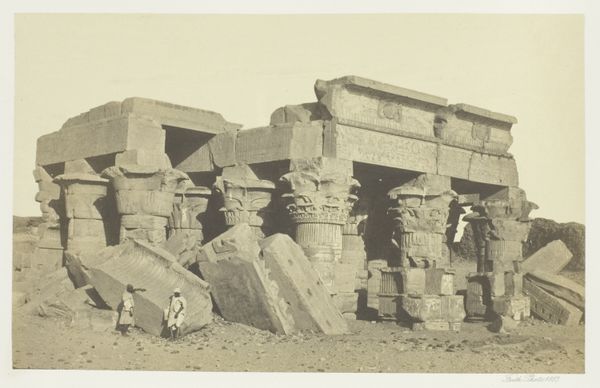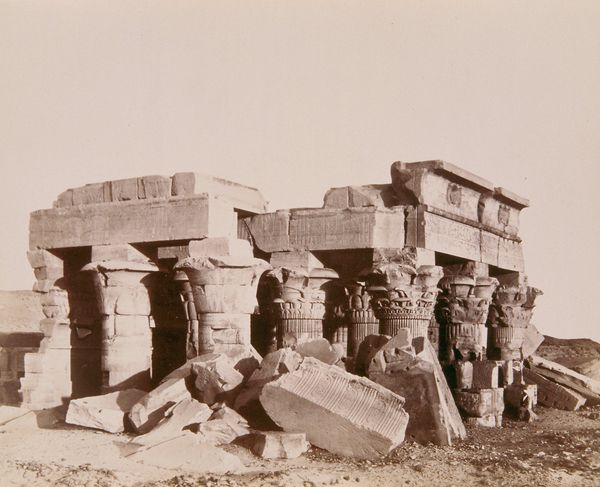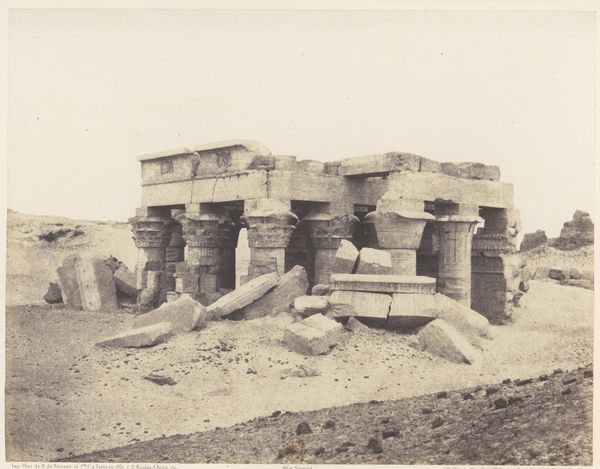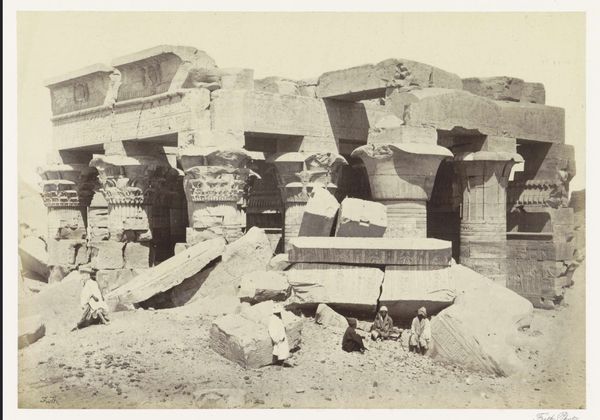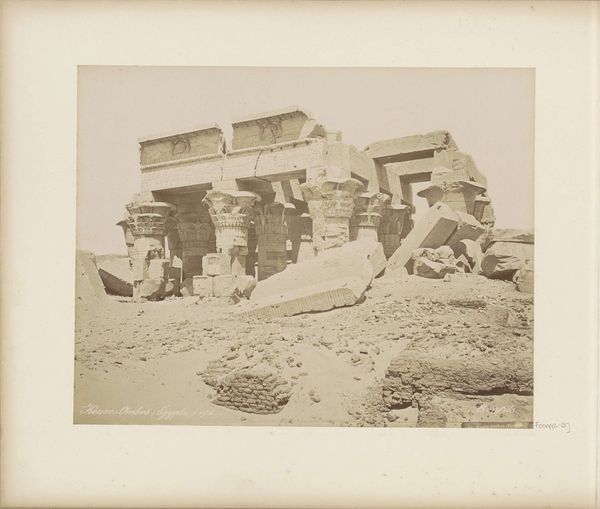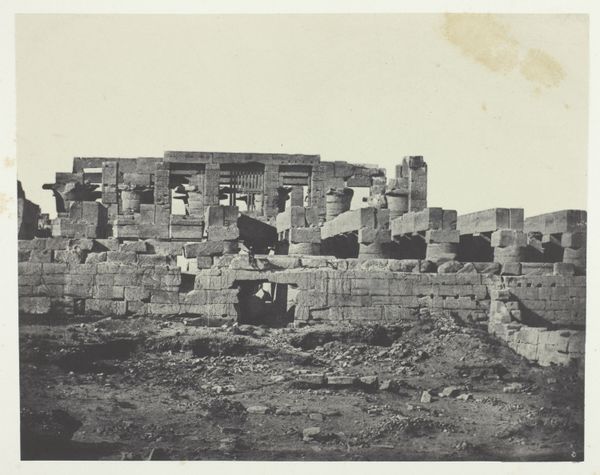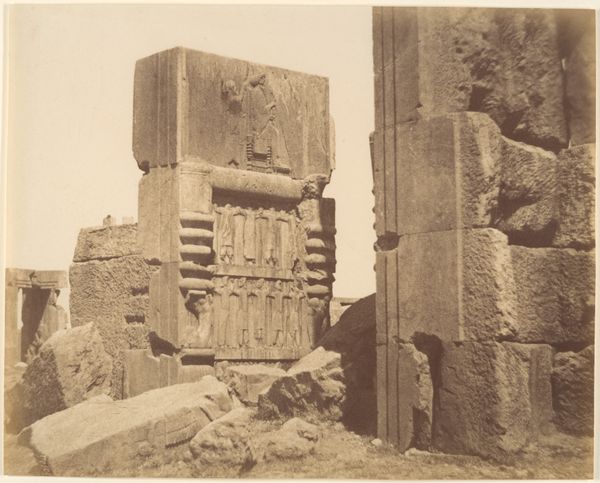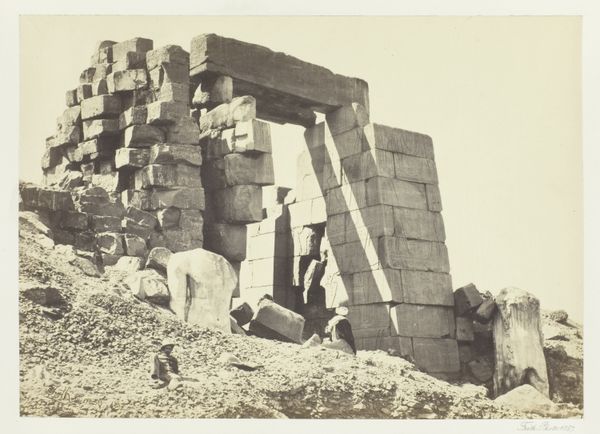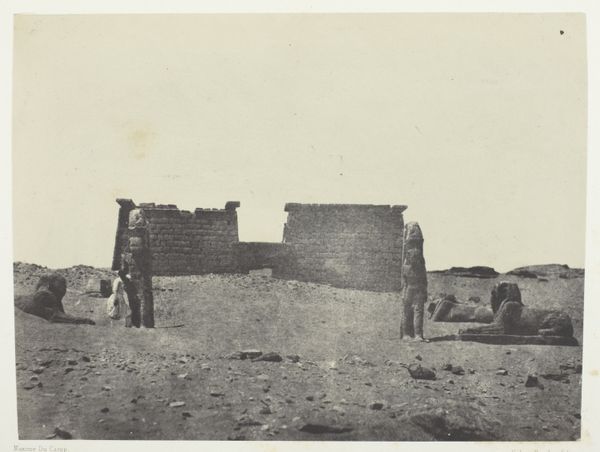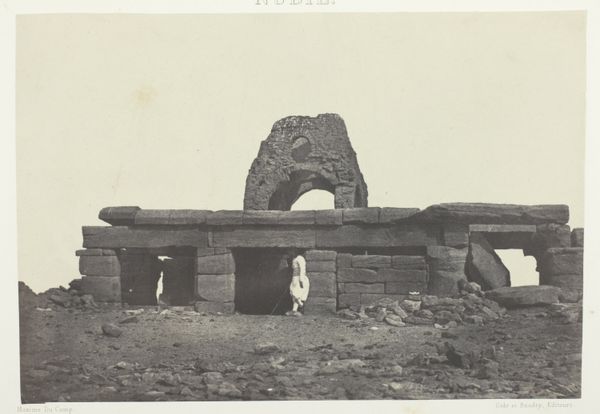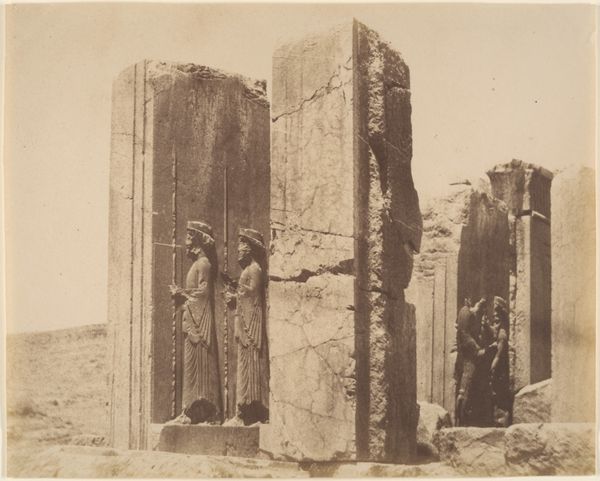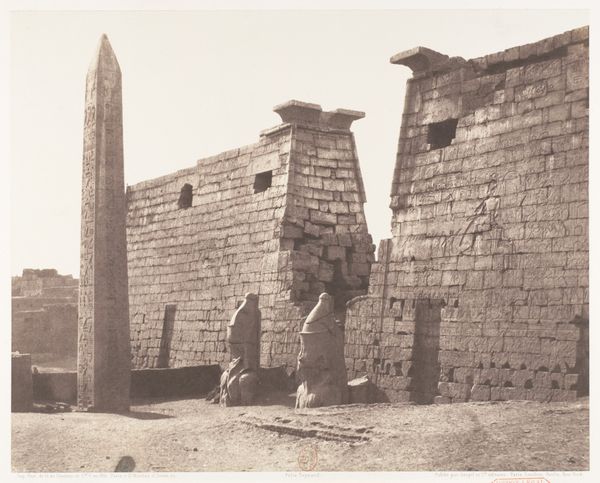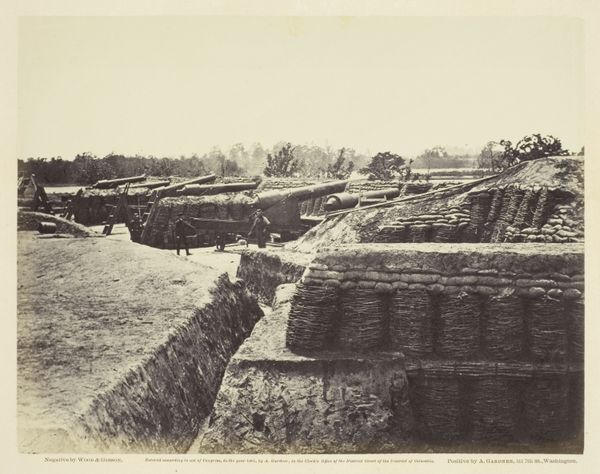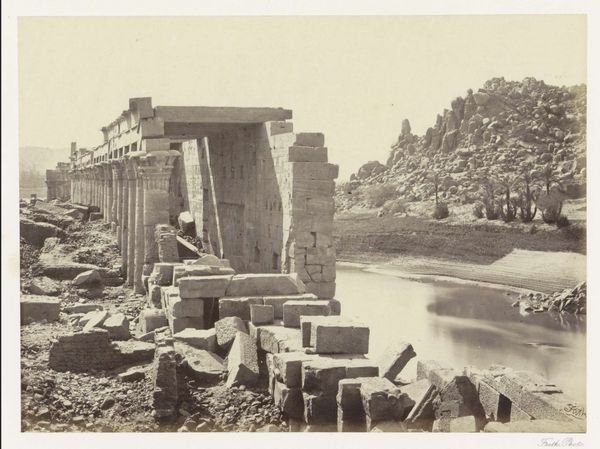
print, paper, photography, architecture
#
16_19th-century
# print
#
organic shape
#
sculpture
#
war
#
landscape
#
ancient-egyptian-art
#
paper
#
photography
#
egypt
#
ancient-mediterranean
#
france
#
history-painting
#
architecture
Dimensions: 17 × 22.1 cm (image/paper); 29.9 × 42.9 cm (album paper)
Copyright: Public Domain
Curator: Here we have Maxime Du Camp's photograph, "Temple d'Ombos, Haute-Egypte," possibly taken between 1849 and 1852. The image, currently held at The Art Institute of Chicago, captures the ancient temple ruins in Upper Egypt. Editor: It's just... a crumbling dream. That's the immediate feeling, a potent melancholic weight hangs in the air here, doesn't it? The shadows, the distressed texture, the fallen pieces. I find that truly moving. Curator: Indeed. Du Camp, working alongside Gustave Flaubert, documented Egypt with this new photographic technology, and these images profoundly impacted how the West imagined Egypt. The Temple of Kom Ombo, as it's known, dedicated to Sobek and Haroeris, represents duality, and power, and... a forgotten pantheon. Editor: Yes, the contrast! Those elaborate, imposing columns juxtaposed with such blatant destruction. Symbolically, for me, it's about time's relentless march and empires reduced to scattered blocks. A beautiful tragedy. Did they feel the tragic element during the photoshoot itself? Curator: That’s a keen observation. Consider that 19th-century Europe sought to categorize and control history through the nascent technology of photography, but here, the image confesses to a sense of loss and inevitable decay of symbols and knowledge despite those efforts to dominate nature. It reveals a fragility, even while seemingly attempting to objectify the captured scene. Editor: Precisely! There’s almost a raw honesty there I wouldn’t expect, as though the ruins were pushing back on being just a sterile document. It resists being pinned down to a time capsule and whispers other realities beyond control, perhaps warning us with a universal vision of endings and rebirths, or how humans might eventually vanish, as we, one day, return to sand. Curator: I concur. The enduring resonance lies in that tension. It’s more than just record keeping; it evokes poignant meditation on what was and what is destined to be. The photographic choices—the framing, the tonal range—lend themselves to somber, affecting impact. Editor: Yes. As if we aren’t just observers. But mirrors…reminded by it that history echoes through us. Thanks to Du Camp for the ruins and also the uncomfortable reminder that awaits.
Comments
No comments
Be the first to comment and join the conversation on the ultimate creative platform.
